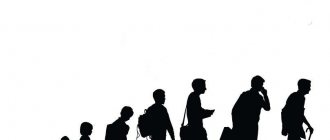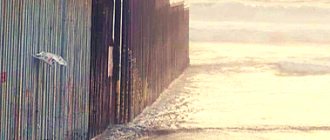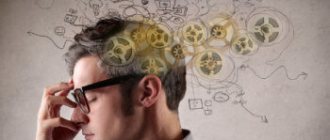Programmers are nowhere without logic. Therefore, it’s time to pump up your brain: test your abilities. Can you handle these logical tasks?
It is useful to solve both logical and mathematical problems. This is how you develop logic and train your brain. Due to his profession, it is extremely important for an IT specialist to monitor the tone of his main “muscle”. The brain loves problems and puzzles, as well as switching attention and taking a break from routine. So let’s get down to some useful fun!
Money paradox
Richard and Paul have the same amount of money.
How much should Richard give to Paul so that he has $10 more than he does? Answer: 5 dollars. Many people answer $10 and make a mistake. Let's say each friend has $50. If Richard gives Paul $10, then Paul will have $60 and Richard only has $40. Therefore, Paul will have $20 more than Richard, not $10.
Show answer
Hide answer
Logic puzzles
13. How to measure 4 liters of water if there are 5-liter and 3-liter containers?
14. How to make the number “4” without breaking a single stick.
15. Which kettle contains more tea?
Wine price
A bottle of wine costs $10. Wine is $9 more than a bottle. How much does an empty bottle cost?
Answer: 0.5 dollar or 50 cents. Many people answer 1 dollar, but this is incorrect. If the bottle really cost that much, then its contents should be $9 more expensive - $10. This means that wine and a bottle would cost $11. And if a bottle costs 0.5 dollars, wine costs 9.5, then everything together is exactly 10 dollars.
Show answer
Hide answer
Enterprising Trader
The merchant bought the product for 7 dollars, sold it for 8, then bought it again for 9 and sold it again for 10. How much profit did he make?
Answer: 2 dollars. Let's say that a trader has $100, and during the day he will make only four of the transactions described.
First, he will pay 7 dollars for his purchase, then he will have 93 left. When he sells his purchase for 8, he will already have 101 dollars.
Then he will buy the same item again for $9, that is, he will again spend $9 on the purchase, leaving him with $92. Finally, he will sell the item for 10, and therefore he will have 102 dollars.
Show answer
Hide answer
Development of social intelligence of adolescents in a temporary group of peers
Polishchuk Anastasia
Development of social intelligence of adolescents in a temporary group of peers
Explanatory note. The problem of social intelligence is becoming increasingly relevant in the modern information , rapidly changing world. Today, everyone is forced to adapt to new conditions set by the surrounding sociocultural environment . Every day society places more and more increased demands on individuals. It needs people who contribute to the development of innovation and world order. Socio-economic changes , which are occurring more and more often, are exacerbating the problem of depersonalization of a person in interaction with the social environment . This is manifested both in the similarity of facial expressions and in the disappearance of individuality in the so-called “gray mass”
. Most people are accustomed to acting in a stereotyped way, without introducing or thinking about something new, unknown, individual.
The concept of social intelligence was introduced by Edward Lee Thorndike in 1920, who understood social intelligence as a person’s ability to understand and predict the behavior of other people in various life situations, as well as to be able to recognize feelings, intentions and emotions by their verbal and non-verbal qualities.
In our opinion, the resolution of this problem depends on active sociocultural adaptation to various living conditions . We believe that a specially developed program to increase the level of social intelligence of adolescents in a temporary group of peers will be a productive way to solve this problem.
Goal: to help increase the level of social intelligence of middle-aged adolescents in a temporary group of peers .
Program objectives:
1. Carry out diagnostics to identify the level of social intelligence of children of middle adolescence at the start of the shift.
2. Contribute to increasing the level of communication and organizational abilities of children of middle adolescence .
3. Teach children to interact with each other in a temporary group of peers .
4. To promote the development of social activity , independence and responsibility by including children in a system of dynamic communicative, creative, project tasks.
5. Development of self-organization skills and the ability to work in a team, taking responsibility for one’s own and collective decisions .
6. Adjustment of relationships between children.
Object: classes are designed for children 13-14 years old.
Subject: social intelligence of middle school children.
Number of participants: 20-30 children of secondary school age.
Conditions of support : camp fire pit, building, area in front of the building.
Materials for classes: chairs, whatman paper, pencils, paints, tape recorder, scripts, tables, tape, markers, ball, pens, A4 paper, corrugated paper, PVA glue, laptop.
Duration: 8 lessons of 1 hour 30 minutes.
Frequency of classes: classes are held 2-3 times a week, throughout the shift (21 days)
.
Expected result: It is expected that as a result of the implementation of the program, the level of social intelligence in average adolescents in middle age will increase.
Form of classes: group.
Sphere of influence: emotional, behavioral, cognitive.
Stages of program implementation:
1. Carrying out diagnostics to identify the level of social intelligence in children of middle adolescence at the start of the shift.
2. Conducting classes, creative activities, organizational events with children.
3. Repeated diagnostics.
4. Summing up (reporting documentation)
.
Description of the group: the group consisted of 22 children (14 boys and 8 girls)
7th and 8th grade. There were no children whose parents wrote a refusal to conduct classes with their children.
The structure of the lesson includes the following components:
1. Greeting (introducing group members to each other, creating an atmosphere of group trust and acceptance, uniting the group).
2. Warm-up (impact on the emotional sphere of children, on their level of activity, allows you to activate children, lift their spirits and set them up for work).
3. The main part of the lesson (a set of psychotechnical exercises and techniques aimed at solving the set tasks of this program. The sequence involves alternating activities, changing the psychophysical state of children: from active to calm, from intellectual to relaxation techniques). Games: with rules, verbal, active , developmental imitative exercises , free and thematic drawing.
4. Farewell ritual.
Planned results: increasing the level of development of children's communication skills and organizational abilities, developing social activity , independence and responsibility by including children in a system of dynamic communicative, creative, project tasks.
Thematic plan:
Lesson No. Purpose of the lesson Date and time
Lesson 1 Getting to know each other, developing the ability to listen to each other, creating trusting relationships in the group, as well as motivating children for squad activities 09/25, 1 hour, 30 minutes (acquaintance, squad activities, corner)
Lesson 2 Create an emotional mood; contribute to broadening their horizons, replenishing the stock of historical and geographical knowledge by introducing children to the history of the region; strive for the moral improvement of children
27/09, 1 hour, 30 minutes
(excursions, RVS)
Lesson 3 Create a gaming space to develop skills in playing games, promote the development of organizational and creative abilities 09/29, 1 hour, 30 minutes
(Play - city, outdoor games)
Lesson 4 Correction and improvement of relationships between children through joint creative activities (to promote the realization of children’s creative abilities)
1/10, 1 hour, 30 minutes
(musical competition)
Lesson 5 Promote moral education and intellectual development , formation of position, development of writing skills 3/10, 1 hour, 30 minutes
(Artek book, works, essays)
Lesson 6 Contribute to the unity of the squad, create conditions for striving for a healthy lifestyle, the formation of physical culture, physical improvement; introducing children to the problems of education 5/10, 1 hour, 30 minutes (lesson of the future social project )
Lesson 7 Improving the level of dancing skills, stimulating the creative activity of children 7/10, 1 hour, 30 minutes
(dance competition)
Lesson 8 Promote the comprehensive development of the child’s personality 10/10, 1 hour, 30 minutes
(Erudite-Marathon)
Plan - layout of lesson 1
Name of exercise Purpose, brief instructions Materials Time
Name + favorite hobby - greeting friend arc
-creating an emotional mood
-creating group trust.
For convenience, sit in a circle so that the players’ faces can be clearly seen.
Someone says their name + hobby.
The next person sitting clockwise says the name of the first player + hobby, then his name + hobby! Soft toy 20 minutes
Caterpillar -Relieve emotional stress;
-Give an opportunity to establish friendly relations between the guys
“Guys, now you and I will be one big caterpillar. Form a line, place your hands on the shoulders of the person in front. Place a balloon between the belly of one player and the back of the other. Touch the balloon (ball)
strictly prohibited! The first participant in the chain holds his ball at outstretched arms. Thus, in a single chain, but without the help of hands, you must follow a given route." Balloons 15 minutes
Squad world (corner)
- identifying and revealing the abilities and
interests of children
- promoting the unity of children
-involve the children in the varied and active activities of the squad. Scotch tape, whatman paper, pencils, paints, brushes, felt-tip pens, corrugated paper, PVA glue 30 minutes
Business card - involve children in a variety of activities
-contribute to the identification and development of creative abilities of children in the squad
-adjusting relationships between children A4 sheet, pens 20 minutes
Reflection - Summarize the past lesson, draw conclusions;
-give each of the guys the opportunity to speak for 5 minutes
Plan - layout of lesson 2
Name of exercise Purpose, brief instructions Materials and equipment Time
A funny story Goal: to promote the development and manifestation of children's creative abilities, as well as team .
The presenter offers a word or sentence, then along the chain the players add their own version of the continuation of the story, the task of the latter is to remember and tell the story that turned out.
Any word or sentence 20 minutes
Rings Purpose: to promote team
Children stand in a line, holding hands, the task is to pass 7 hoops, starting with the first child and ending with the last, then pass the hoops in the same way to the first player, the main thing is to do this without using your hands. 7 hoops, stopwatch 15 minutes
Explore , find out, report Give the children an opportunity to show their organizational and creative abilities List of questions about the history of the camp, pen 30 minutes
Environmental problems Goal: to introduce children to environmental problems, to promote fruitful team work.
Identify a problem related to the environment and a way to solve this problem, present everything on whatman paper in one image Whatman paper, pens, markers, paints, pencils 20 minutes
Reflection - Summarize the past lesson, draw conclusions;
-give each of the guys the opportunity to speak for 5 minutes
Plan - layout of lesson 3
Name of exercise Purpose, brief instructions Materials and equipment Time
Catch the tail Goal: team , consolidation of teamwork skills, development of attention . Instructions: Everyone stands in a column one after another, wrapping their arms around the waist of the person in front. The player standing last in the column puts a bandage in the back of his belt. This is the “tail”. Standing in front ( "head"
) must catch
the “tail”
.
If a column breaks, the game is interrupted until everyone is clinging to each other again. If the “head”
managed to catch
the “tail”
, then the first player in the column becomes the last, putting
the “tail”
behind him.
The second player becomes
the “head” Now he's catching his tail
! Rope or bandage 20 minutes
Funny cartoon Goal: to put inactive children in an active position, to involve all the children
The task of the whole team is to portray their counselors in a humorous manner in 10 minutes What paper, markers, pencils 15 minutes
Play-city Goal: to create a gaming space for developing skills in playing the game; promote the development of organizational and creative abilities.
It is necessary to come up with and conduct 3 active or intellectual games at a general camp event: markers , paints, tape, cardboard for 30 minutes
Chamomile Purpose: to promote the development of creative abilities, as well as team
A large daisy is cut out from an album sheet; the more participants, the more petals. On the reverse side, everyone writes on the petals, unbeknownst to others, writes the task - to sing, dance, somersault, do 20 push-ups, do the splits, etc. Participants take turns tearing off the petals randomly and doing what is indicated to the accompaniment of cheerful music. Landscape sheet, markers 20 minutes
Reflection - Summarize the past lesson, draw conclusions;
-give each of the guys the opportunity to speak for 5 minutes
Plan - layout of lesson 4
Name of exercise Purpose, brief instructions Materials and equipment Time
Traffic light Purpose: to involve children in an interesting game , to promote the development of attention .
The presenter has cards of three colors: red, yellow, green. When the presenter shows the children a green card, they should stomp their feet, a yellow card should clap their hands, and a red card should sit quietly. The presenter has an assistant who confuses the guys and shows the wrong things. Green, red and yellow cards 20 minutes
Enchanted Castle Goal: to give each of the children the opportunity to express themselves.
The players are divided into two teams. The first ones must disenchant the “castle”
, and the second command is to prevent them from doing this.
At the same time, everyone is blindfolded. The “castle”
can be a tree or a wall.
Near the “castle”
there are two guys at the main gate.
They are randomly located on the playing area. The players who must disenchant the “lock”,
at the command of the leader, begin to silently move towards the main gate.
Their task is to quietly reach the gate, go through it and touch the “lock”
. At the end of the game, the guys change roles. Blindfolds 15 minutes
Sea-school of courage Goal: correction and improvement of relationships between children through creative activities; contribute to the development of spectator culture.
Choose a piece of music on a nautical or school theme, play it and choose costumes for the performance Guitar, lyrics of the song “Let’s sit by the big fire”
(authors Alexander Geyts, Sergey Danilov, costumes 30 minutes
School of the Future Goal: to bring children closer to the problems of education; promote the creative development of each of the squad Whatman paper, markers, pencils, paints 20 minutes
Reflection - Summarize the past lesson, draw conclusions;
-give each of the guys the opportunity to speak for 5 minutes
Plan - layout of lesson 5
Name of exercise Purpose, brief instructions Materials and equipment Time
Santiki-candy wrappers-limpopo Goal: developing teamwork skills, improving relationships in the group, developing concentration, creating a situation of success.
Everyone stands in a circle. One of the players leaves. The rest of the team members choose a driver, who gives the group any movements and changes them after a while . The task of the person entering is to determine the initiator of the movement. If the driver is successful, he remains in the circle, and the guessed initiator leaves the circle, becoming the driver, and the game is repeated again. During the game, all participants repeat the words out loud: “Santiki-candy wrappers-limpopo”
. 20 minutes
A hare without a den Goal: to promote the inclusion of everyone in the diverse and active activities of the squad.
The participants of the game stand in pairs facing each other, raising their clasped hands up. This is the hare's lair
.
Two drivers are selected - “hare”
and
“hunter”
.
The hare must run away from the hunter, while he can hide in the “den
,” that is, stand between the players.
The one to whom his back is turned becomes a “hare”
and runs away from
the “hunter”
.
If the “hunter”
makes fun of
the “hare”
, then they change roles. 15 minutes
Artek's book Goal: to master the skill of writing essays with the guys, to involve everyone in varied and active activities.
Each child in the squad writes an essay on a chosen topic, which can be supplemented with drawings. Topics for the essay: 1. School of the future - everything is real!
2. Teachers only open the doors, then you go on your own!
3. An incident in the squad
4. Legends about “Artek”
30 minutes
Hello Everyone stand in a circle facing shoulder to shoulder. The driver walks along the outside of the circle and touches one of the players. The driver and the player who was hit run in different directions along the outside of the circle. Having met, they shake hands and say: “Hello.”
. You can also say your name. Then they run further, trying to take an empty place in the circle. The one who is left without a place becomes the driver. 20 minutes
Reflection - Summarize the past lesson, draw conclusions;
-give each of the guys the opportunity to speak for 5 minutes
Plan - layout of lesson 6
Name of exercise Purpose, brief instructions Materials and equipment Time
Guess whose voice Goal: developing attention , strengthening team interaction skills.
The driver steps aside while the players agree on who will vote. Then the driver stands in a circle and closes his eyes. The players walk in a circle with the words: “We gathered together in a circle, suddenly turned around at once, and how do we say “Leap, hop, hop”
(these words are pronounced by one person, guess whose voice.” The driver opens his eyes and guesses which of the guys said
“Jump, skok, skok.”
If he succeeds, he changes places with the speaker. You can give the driver three attempts. If he still doesn't guess, the game starts over again. Blindfold 20 minutes
Squirrels, nuts, cones All the guys stand up, holding hands, three at a time, forming a “squirrel’s nest”
.
They agree among themselves who will be the “squirrel
,” who will be
the “nut
,” and who will be
.
” The driver alone, the Leader, pronounces the words: “squirrels”
,
“cones”
,
“nuts”
.
If he said “squirrels
,” then all the squirrels leave their nests and run to others.
At this time , the driver takes an empty space in any nest, becoming a squirrel. The one who does not have enough space in the nests becomes the leader. If the leader says: “nuts,”
then the nuts change places and the driver, who took a place in the nest, becomes a nut.
The driver and the leader can be different people, or both functions can be performed by one person. The leader can be given the command: “squirrels, cones, nuts
,” and then everyone changes places at once. 15 minutes
Lesson of the future Goal: identifying and revealing the abilities and interests of the children , correcting relationships in the squad. The team’s task is to develop and demonstrate a lesson about the future in any creative form (poem, skit, poster, etc.)
Whatman paper, pencils, pens, paints, markers 30 minutes
The Water Leader sits in a circle with his eyes closed. The players move in a circle saying:
Grandfather of the water,
Why are you sitting under water?
Look out for a little bit
For one minute.
The circle stops. "Water"
gets up and, without opening his eyes, approaches one of the players.
His task is to determine who is in front of him. The “merman”
can touch the player standing in front of him, but his eyes cannot be opened.
If the “merman”
guessed right, he changes his role and now the one whose name was named becomes the driver. Eye patch 20 minutes
Reflection - Summarize the past lesson, draw conclusions;
-give each of the guys the opportunity to speak for 5 minutes
Plan - layout of lesson 7
Name of exercise Purpose, brief instructions Materials and equipment Time
Shore and River This game requires the children to be attentive. Two lines are drawn on the ground at a distance of about one meter. Between these lines is the “river”
, and at the edges -
“shore”
.
All the guys stand on the “banks”
. The leader gives the command:
“RIVER”
, and all the guys jump into the
“river”
.
At the command “SHORE”
everyone jumps onto
the “shore”
.
The leader gives commands quickly and randomly to confuse the players. For example: “SHORE, RIVER, RIVER, SHORE, RIVER, RIVER, RIVER.”
If at the command
“SHORE”
someone ends up in the water, then he leaves the game for 20 minutes
Seine All the players are fish, except two fishermen. Fishermen holding hands run after the fish. They try to surround it, closing their hands around the fish. Gradually, a whole chain is formed from the caught fish - a “net”. Now the fish are caught with a seine. The last two players not caught are the winners. 15 minutes
Dance marathon Goal: correction and improvement of relationships between children through creative activities; contribute to the development of spectator culture.
The children's task is to perform and demonstrate a dance on a school or nautical theme. Music for dance 30 minutes
Wink All players stand in pairs in a circle, one player behind the other. Everyone's hands are down. The driver also stands on the line of the circle. He doesn't have a partner behind him. He must look into the eyes of one of the first line players and wink. The one who was winked runs from his place and stands behind the driver. 20 minutes
Reflection - Summarize the past lesson, draw conclusions;
-give each of the guys the opportunity to speak for 5 minutes
Plan - layout of lesson 8
Name of exercise Purpose, brief instructions Materials and equipment Time
Atoms and molecules All players move randomly around the playing area, at this moment they are all “atoms”
.
Those playing at the leader’s command will need to create a “molecule
,” that is, several players will need to grab each other and create the shape that the leader sets. 20 minutes
Groups by trait The leader rings the bell, everyone runs around him. Suddenly the ringing stops and the leader shouts: “ (Gather in groups)
according to height!
(by eye color, by shoe size, three each.)
.
Those who did not manage to find a group are temporarily eliminated from the game .
Bell 15 minutes Scrabble - marathon Goal: To promote the comprehensive development of the child’s personality .
Prepare photo and video questions on the topic of myths about Russia or Russia through the eyes of foreigners. Pen, A4 sheets, laptop 30 minutes
We are together, we are all in place Goal: to promote the development of children's creative and intellectual abilities .
The task of the squad is to compose a chant together about how they imagine their life within the walls of the camp. A4 sheet, pens, 20 minutes.
Reflection - Summarize the past lesson, draw conclusions;
-give each of the guys the opportunity to speak for 5 minutes
List of used literature
1. Raising and teaching children in a auxiliary school: A manual for teachers and students, defectologist. f-tov ped. Institute / Ed. V.V. Voronkova, M.: Shkola-Press, 2012.
2. Dzarieva N.P.K.: Collection of games for children in a children's camp: And we play! 2015. 34 p.
3. Zhukov M. N. Outdoor games: Textbook. for students ped. universities M.: Publishing
, 2000. No. 86. 160 p.
4. KupriyanovB. V., Rozhkov M. I., Frishman I.I. Organization and methods of conducting games with teenagers . Adult games for children. M.: Vlados, 2001. 216 p.
5. Yakovlev. B. Games for children. M.: Physical culture and sport, 2011. 176 p.
Big and small birds
The pet store sells large and small birds. A big bird is twice as expensive as a small one. The woman bought five large birds and three small ones. If she had bought three large birds and five small ones instead, she would have spent $20 less. How much does each bird cost?
The price of one large bird is equal to the price of two small ones, so five large birds will cost the same as 10 small birds. This means that five large birds and three small ones will cost the same as 13 small ones. On the other hand, the price of three large and five small birds is equal to the price of 11 small ones.
Thus, the difference between the price of five large and three small birds turns out to be equal to the difference between the price of 13 and 11 small birds, that is, equal to the price of two small ones. Since two small birds cost 20 dollars, the price of one of these is 10 dollars.
Therefore, the bill for five large and three small birds would be $130. If a woman bought three large and five small birds, she would spend $110, which is really $20 less.
Answer: a small bird costs 10 dollars, a large bird costs 20.
Show answer
Hide answer
The Ten Favorites Problem
Ten dogs and cats were fed 56 biscuits. Each dog got six biscuits, each cat five. How many dogs and how many cats were there?
There is a solution to this problem that requires neither algebra nor enumeration of options. First, let's feed each of the ten animals five biscuits. There will be six biscuits left. But now all the cats have received their fair share! This means that the six remaining biscuits are for the dogs. And since each dog should get one more biscuit, that means there are six dogs and four cats.
This solution is easy to test. If six dogs eat six biscuits, it will cost 36 biscuits. Four cats, each content with five biscuits, will eat 20 biscuits. This will total 56 biscuits.
Answer: four cats and six dogs.
Show answer
Hide answer
Motorcycle rides
You have 50 motorcycles with a full tank, which is enough for 100 km of riding.
Question : Using all the motorcycles, what is the maximum distance you can travel? All motorcycles at the beginning of the journey are conditionally at one point.
Answer
The simplest solution that can come to mind is to simply start all the motorcycles and ride them for 100 km at the same time. But you can go further. To do this, first drive 50 km. All motorcycles will have half-filled tanks. Transfer fuel from one half of the motorcycles to the other half. You now have 25 motorcycles with a full tank. Drive another 50 km and repeat the operation. This way you can travel 350 km
Plain socks
In a dark room there is a closet, in a drawer of which there are 24 red and 24 blue socks. What is the smallest number of socks that must be taken from the drawer so that they can be used to make at least one pair of socks of the same color?
Answer: three socks. If you take three socks from a drawer, they will either all be the same color, or two socks will be one color and the third sock will be a different color, which will also make a pair of the same color socks.
Show answer
Hide answer
What intellectual abilities does a schoolchild need?
From elementary school, boys and girls urgently need to develop critical and logical thinking (detailed information with a specific solution is in this article).
At the age of 6-10 years, a person’s mentality is formed - analytical, visual-figurative or mixed.
Already in elementary school, children should actively develop:
- working memory (the ability to hold several intermediate facts, decisions, conclusions in the head);
- skills of ordering thoughts in judgments, striving to build the correct architecture of thinking;
- the ability to draw conclusions from the received arrays of information;
- Gradually increase the speed of performing analytical and other operations.
To better understand how to develop intelligence in a child, how to be able to help him improve his mental abilities, you need to remember:
- only comprehensive work on increasing intellectual abilities in primary school age (logic, creativity, erudition, emotional, social and practical intelligence) forms a successful personality;
- a pronounced tendency towards analytical thinking does not cancel creative impulses, they only “hide” behind logic, but they can and should be developed in order to raise a harmonious personality;
- It is necessary to increase intellectual abilities not only at the computer, but also through sports: the undisputed leaders are chess, karate; Any team sports, general physical training and athletics are also useful.
Exercises for developing the abilities of younger schoolchildren
In the first grades, children do not yet learn mathematics; they are just beginning to be introduced to the course of arithmetic. However, it is already possible to solve simple mathematical puzzles, problems searching for patterns and other logic tasks with them.
Arithmetic puzzle from the LogicLike course
Such exercises are both an excellent training for the child’s thinking and reasoning skills, and a pleasant preparation for parents to do homework together.
Effective methods and ways to develop intellectual abilities at primary school age will be the same exercises that are recommended for younger children (see the material “Tasks and exercises for preparing for school”).
Period from seven to ten years
– the most intensive in terms of intellectual development. At this time, nature itself helps: the child’s sense of competition intensifies and voluntary attention and conscious interest in analytical activity are formed. You can safely add to mathematical and logical problems:
- tasks on spatial thinking (figures and their development, reflections, etc.);
- chess - perfectly develops the intellect and motivates with the opportunity to surpass your opponent in flexibility and inventiveness of the mind; chess problems for beginners - can teach even a beginner how to play chess at a decent level and significantly increase interest in this game;
- various puzzles for verbal-logical, visual-figurative and abstract-logical thinking, creativity, ingenuity and ingenuity, including truth and lies tasks, algorithms, puzzles with matches and much more.
The comprehensive training program is structured in such a way that the level of difficulty in each category of tasks gradually increases. The LogicLike training system will tell you where to start.











